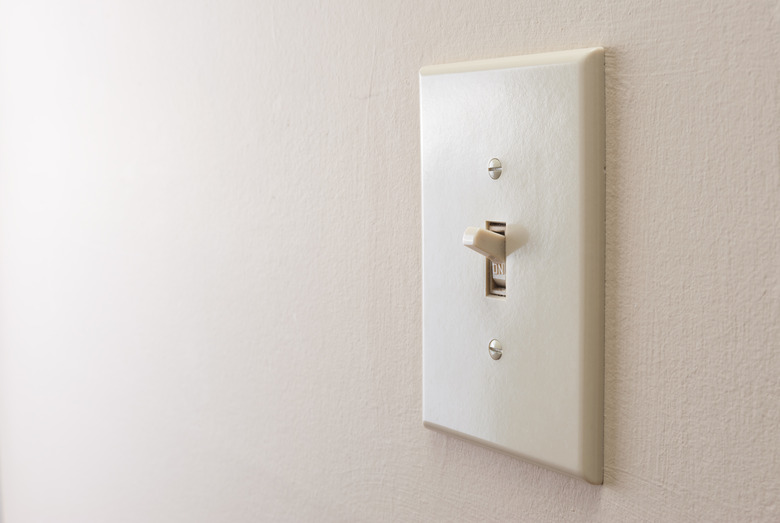How To Wire A Three-Way Switch As A Single Pole
It's typical for homeowners to have a drawer full of odds and ends, such as screws, spare plumbing parts, tape, and who knows what else. You may even have a spare electrical switch in that drawer, which you can use to replace an old switch that isn't working. There's just one problem: The switch in your drawer is a three-way one, and the one you're replacing is a single pole. You can still use the three-way switch for this purpose, although it's a bit wasteful because three-way switches are more expensive. But if it saves you a trip to the hardware store, it's probably worth it.
The Difference Between Single Pole and Three-Way Switches
The Difference Between Single Pole and Three-Way Switches
A single pole switch has two brass terminals — one for the hot wire from the power source and one for the hot wire to the fixture. When the switch is off, the connection between these two wires is broken, and the fixture gets no electricity. Flip the switch on and electricity flows.
A three-way switch is designed to work in tandem with another three-way switch to allow you to control a fixture from two different locations. For this reason, it doesn't have on/off markings because it can turn off the power when it is both up and down, depending on the orientation of the other switch. The two switches have to be connected to each other as well as to the power source and the fixture, so each has three terminals instead of two. Two of the terminals, called travelers, are brass colored and one, called the common, is black or some other color to distinguish it from the other two.
In normal three-way wiring, you use the traveler terminals to connect the switches and the common terminals for the power source and fixture. Typically, you wire the power source to the common on one switch and the fixture to the common on the other.
How to Adapt a Three-Way for Single Pole Service
How to Adapt a Three-Way for Single Pole Service
You don't need all three terminals on the three-way switch when you're using it as a single pole switch. If you look at the switch, you'll see that the two travelers are arranged across from each other on the switch body, and the common is either underneath or above one of them. The two terminals you should use are the common and the traveler on the same side of the switch body. You might want to cover the other traveler with electrical tape to avoid confusing anyone who services the switch in the future.
Now that you know which terminals to use, you can wire the switch following the same procedure you would use for any single pole switch:
- Connect the hot wire from the power source to the common terminal and the hot wire going to the fixture to the uncovered traveler.
- Splice the white return wires together and cap them, then clamp or twist the bare ground wires together and connect them to the green ground terminal.
